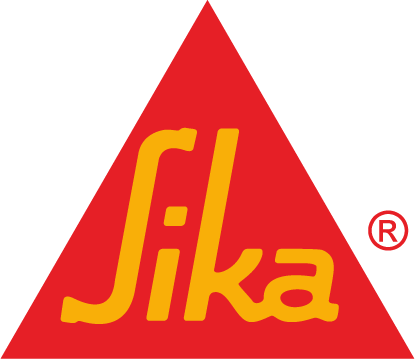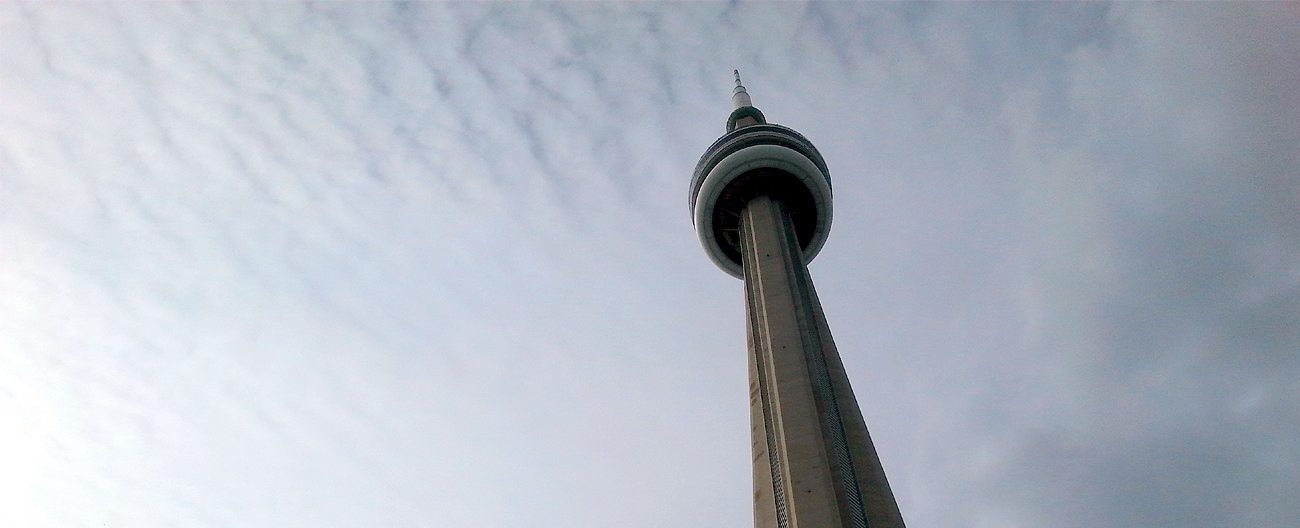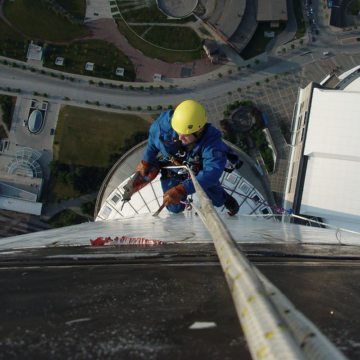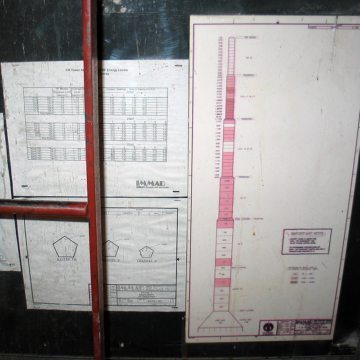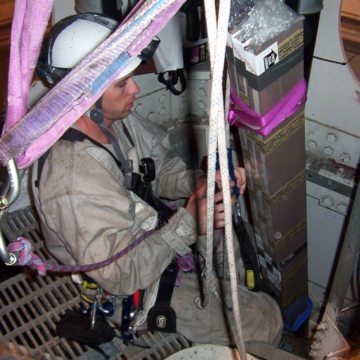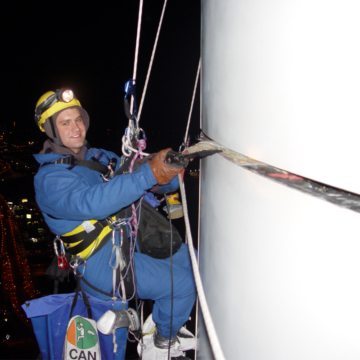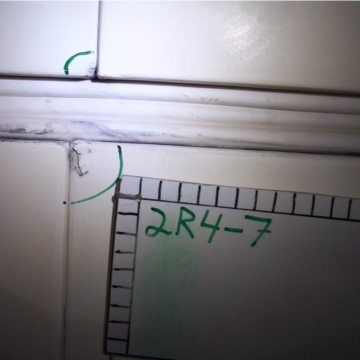The CN Tower, Toronto, ON
Ontario
Date: 2004
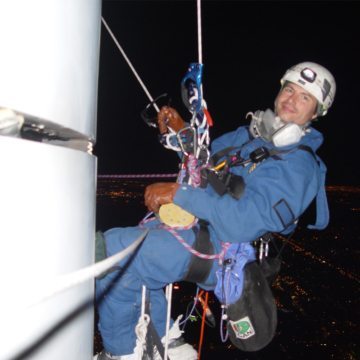
After a 10-year test evaluation, Colorseal proved capable of handle the extreme weather, air-pressure differentials, wind and wind sway conditions atop Toronto's iconic CN Tower. Based on the trial, all of the joints in radio mast were replaced using rope access.
COLORSEAL AT THE TOP OF THE WORLD:
After 10 years of successful performance testing against ice, rain, snow, sun, and wind gusts up to 125 mph at the top of the CN Tower located in Toronto, Colorseal becomes the basis of design for a daring resealing project.
Working from 1,400 to 1,800 feet above the ground the project started in June 2004 is expected to last 3 years.
Project:
- 553.33 m (1,815 ft, 5 inches) tall.
- $63 million to build in 1976 (about $300 million in today’s figures).
- 40 months to complete: February 6, 1973 — June 1976.
- $26 million expansion, opened on June 26, 1998 took only 9 months to complete.
- 1,537 workers five days a week, 24-hours a day.
- Winds of 120 mph, with 200 mph gusts: Sway at various heights:
- Antenna: 1.07 m (3.5 feet) from center
- Sky Pod 0.46 m (1.5 feet) from center
- Main Pod: 22.9 cm (9 inches) from center
Scope of Contract:
- Total feet of structure joint gasket: 2,100 LF
- Total feet of control joint liquid sealant: 2,950 LF
- Total square-footage of coating: 20,600
- Total amount of fiberglass repair: unit price per repair
- Budgeted 100 small–down to gel coat
- Exposed fiber–T&M
- Actual breakage, ice damage–T&M after assessment
- Working Months: Planned April through October (7 months a year for 2 years). Missed two months due to contract delay in 2004–may be pushed into 3rd year.
- Basis of contract: Lump Sum + Negotiated repair extras
- Down time: All down time is paid for–theoretically (fight for every hour with owner). Owner budgeted 20 days of downtime for entire contract–already have 30 day.
- Structural joint gaps vary from ring to ring: Average 1 1/2″ Along length: Between 1 to 1 1/2 some place 1/2″ one side 2″ variation 1/2 to 2″ made in special stick with built in variation.
- Material Used:
- Structural gasket at rings: EMSEAL Colorseal and EMSEAL Backerseal to fill flange voids
- Butt Joints: Dow Corning 795 Silicone
- Elastomeric: Mathis Noxyde
Performance/Problems/Challenges
- Completely different atmosphere at the top of the tower. On June 2nd it was snowing at the top and -3° C (26° F), at the base it was 23° C (73° F).
- RF levels: Antennae completely shut down when working. Can go inside steel-shielded core without protection.
- Adjustment of Radio Frequency intensity: Continuous monitoring-technician checked to ensure that the antennae were in fact off, in the same way confined space entry check for oxygen levels.
- Getting material to work areas.
Installation Prep - Structural Joints:
- Removal: cut out all of the debris, rivets, scrapers, alcohol and water solution (solvent would ignite instantly–even the suits spark to the tower).
- Surface grinding, cleaning priming.
- Waste removal: Rope bags on outside or push inside.
- If leave sections open, rewipe and install. Tower leaks allover the place anyway.
- Mostly cut the Colorseal sticks to 38-48 inches for handling.
Material Installation:
- Picture shows installed structural-joint sealant with control joints above and below.
- Butt-joints: Liquid sealant–nothing in there now. So just solvent wipe and tool the sealant.
- Elastomeric–sand, one sanding 60-grit, wipe with alcohol and water and rags, 20 industrial garbage bags of rags for the work complete.
- Mathis–Noxyde elastomeric coating. Water-based because of flammability, and 400 percent elastic, coefficient of friction low to prevent ice from forming. Two coats of 14 micron.
- Backerseal around flange flair.

